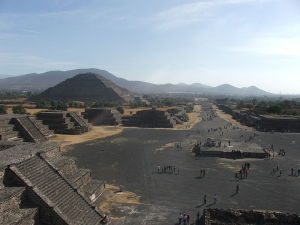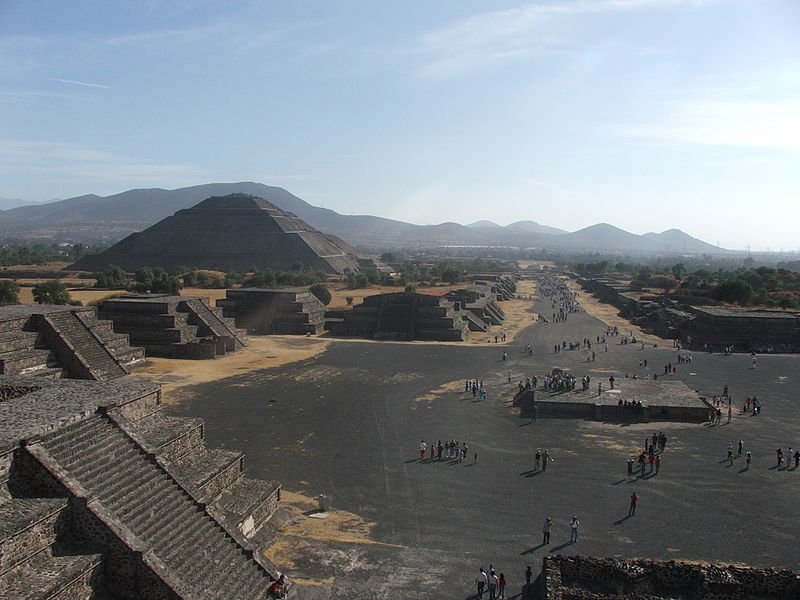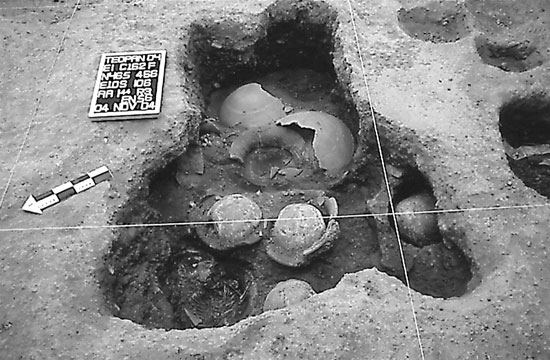
A recent study paints a picture of a great ancient Mexican city-state that eventually collapsed, at least in part, due to the weight of its own internal social, political and economic struggles.
Known as Teotihuacán, the enigmatic end of this ancient, powerful central Mexican civilization has been the subject of a variety of theories and explanations, including warfare, draught, and internal unrest or conflict, to name a few. The latest study, however, points to internal social and economic struggles characteristic of a mixed, complex and fractured social fabric and power structure that essentially set the stage for conditions leading to its downfall.
“The contrast between the corporate organization at the base and top of Teotihuacán society and the exclusionary organization of the neighborhoods headed by the highly competitive intermediate elite introduced tensions that set the stage for Teotihuacan’s collapse,” stated Linda Manzanilla of Mexico’s Universidad Nacional Autónoma de México in her report, published in the Proceedings of the National Academy of Sciences.*
Teotihuacán was one of the most powerful cultural centers in Mesoamerica between the 1st and 6th centuries CE. Unlike most preindustrial urban settlements, Teotihuacán was well-planned and multiethnic partly because two volcanic eruptions forced people of differing cultures to migrate to the metropolis, bringing with them new skill sets, knowledge, and additional labor to support a developing economy.
________________________________________
 The ancient city of Teotihuacán, 30 miles northeast of modern-day Mexico city. Wikimedia Commons
The ancient city of Teotihuacán, 30 miles northeast of modern-day Mexico city. Wikimedia Commons
_________________________________________
Manzanilla’s findings are the result of extensive excavations and multidisciplinary analyses of bodies buried in Teotihuacán and, more specifically, one neighborhood center, Teopancazco. Her analyses included measurements of activity markers, nutritional patterns and status, isotopes, and ancient DNA. The results revealed groups from different backgrounds settling mostly on the margins of the metropolis. Around the city core, however, elites exploited the new dynamics by fostering the movement of goods, such as pigments, cosmetics, slate, greenstone, travertine, and foreign pottery, acquiring workers from a variety of foreign cultures to perform specialized tasks. The resulting complex multiethnic neighborhoods aggressively competed with each other and allowed intermediate elite residents to wield social and economic power. Manzanilla suggests that the contrast between the corporate organization wielded by the elites at the top of Teotihuacán society and the differing neighborhoods headed by the highly competitive intermediate elites introduced tensions that helped lead to Teotihuacán’s eventual collapse.
__________________________________________
 Decapitated males from Teopancazco, a neighborhood within the ancient Mexican city of Teotihuacan. Image courtesy of Linda Manzanilla.
Decapitated males from Teopancazco, a neighborhood within the ancient Mexican city of Teotihuacan. Image courtesy of Linda Manzanilla.
__________________________________________
“The major ritual and administrative buildings along the Street of the Dead were set on fire in A.D. 550, and the sculptures inside palatial structures, such as Xalla, were shattered,” reported Manzanilla. “No traces of foreign invasion are visible at the site. We interpret this event as a revolt against the ruling elite, perhaps a response to a late intervention on the part of the state to control the entrepreneurial movements of the intermediate elite.”*
The report is published in the Proceedings of the National Academy of Sciences.
________________________________________________________
*Article #14-19881: “Cooperation and tensions in multiethnic corporate societies using Teotihuacan, Central Mexico, as a case study,” by Linda Manzanilla.
Source: Adapted, rewritten, and edited from a press release of the PNAS with information from the published study report.
________________________________________________________
Read about the most fascinating discoveries with a premium subscription to Popular Archaeology Magazine. Find out what Popular Archaeology Magazine is all about. AND MORE:
On the go? Get the smartphone version of Popular Archaeology as an app or as an ebook.
Recently released!
A special new premium quality print edition of Popular Archaeology Magazine. A beautiful volume for the coffee table.
Travel and learn with Far Horizons.
____________________________________________
Popular Archaeology’s annual Discovery Edition eBook is a selection of the best stories published in Popular Archaeology Magazine in past issues, with an emphasis on some of the most significant, groundbreaking, or fascinating discoveries in the fields of archaeology and paleoanthropology and related fields. At least some of the articles have been updated or revised specifically for the Discovery edition. We can confidently say that there is no other single issue of an archaeology-related magazine, paper print or online, that contains as much major feature article content as this one. The latest issue, volume 2, has just been released. Go to the Discovery edition page for more information.







